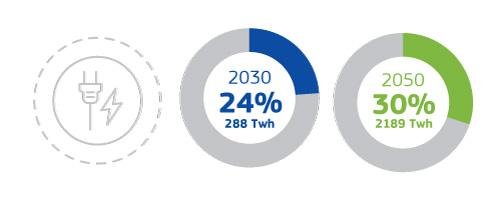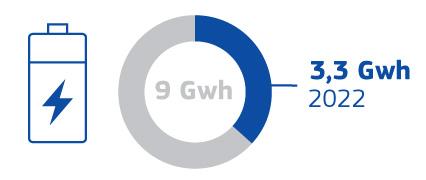Energy storage is a crucial technology to provide the necessary flexibility, stability, and reliability for the energy system of the future. System flexibility is particularly needed in the EU’s electricity system, where the share of renewable energy is estimated to reach around 69% by 2030 and 80% by 2050.
The Commission adopted in March 2023 a list of recommendations to ensure greater deployment of energy storage, accompanied by a staff working document, providing an outlook of the EU’s current regulatory, market, and financing framework for storage and identifies barriers, opportunities and best practices for its development and deployment.
Key facts
System flexibility is particularly needed in the EU’s electricity system, where the share of renewable energy is estimated to reach around 69% by 2030 and 80% by 2050 (from 37% in 2021).

The need for flexibility in the electricity system will increase significantly in all EU countries, reaching 24% (288 TWh) of total EU electricity demand in 2030 and 30% (2 189 TWh) by 2050 across all timescales (from 11% in 2021).

The daily, weekly and monthly flexibility requirements should reach averages of 2.52 TWh/day, 14.6 TWh/week and 41.68 TWh/month by 2050.
On average across the EU, the overall flexibility requirements increase significantly when the share of renewable generation in the electricity system is above 74% of the total installed capacity.

Many European energy-storage markets are growing strongly, with 2.8 GW (3.3 GWh) of utility-scale energy storage newly deployed in 2022, giving an estimated total of more than 9 GWh.

Looking forward, the International Energy Agency (IEA) expects global installed storage capacity to expand by 56% in the next 5 years to reach over 270 GW by 2026.

Different studies have analysed the likely future paths for the deployment of energy storage in the EU. These studies point to more than 200 GW and 600 GW of energy storage capacity by 2030 and 2050 respectively (from roughly 60 GW in 2022, mainly in the form of pumped hydro storage).

Key actions
The EU needs a strong, sustainable, and resilient industrial value chain for energy-storage technologies. There is an increasing demand for data transparency and availability, and greater data granularity, including network congestion, renewable energy curtailment, market prices, renewable energy, greenhouse gas emissions content and installed energy-storage facilities. This need becomes more important for decisions about investing in, choosing a location for, and evaluating new energy-storage facilities.
EU countries are essential in the process. They should
- assess capacity needs for the relevant energy storage technologies as well as potential financing gaps
- identify actions necessary to remove barriers to the deployment of demand response and behind-the-meter storage
- establish cost-effective processes, such as competitive bidding systems and suitably designed capacity mechanisms
- accelerate the deployment of storage facilities and other flexibility tools in islands, remote areas and the EU’s outermost regions with insufficient or unstable grid capacity
- publish detailed data on the energy market to facilitate investment decisions on new energy storage facilities
- support research and innovation - in particular, long-term energy storage – and launch technology accelerator programmes and dedicated support schemes
EU initiatives can play a role in
- facilitating the deployment of flexible resources to complement intermittent renewable production
- addressing specific barriers for distributed flexibility sources, including energy storage
Documents
- 14 MARCH 2023
